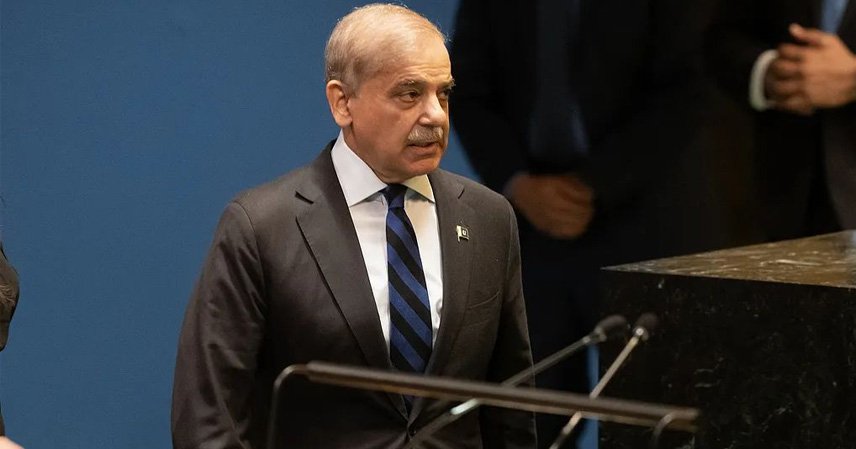China-Pakistan “Balancing Act” Misconception
Pakistan once assumed that China would hesitate to take a hard line, believing that China needed Pakistan—especially for Gwadar Port and the connected highway network. They hoped to benefit from both sides and play a balancing act. The reality, however, is that China has already calculated the stakes: Pakistan cannot be allowed to become too strong, yet it must remain a stable partner. The key is maintaining balance.
Strategic Significance of Gwadar Port
Gwadar Port is indeed strategically significant for China. Located at the entrance of the Arabian Sea, just 400 kilometers from the Strait of Hormuz, it handles roughly 40% of global oil shipments daily. Previously, about 80% of China’s crude imports had to pass through the Malacca Strait. Any disruption there would seriously impact coastal refineries. To secure this “lifeline,” China invested billions over more than a decade, expanding the port from three berths to thirteen, capable of accommodating 200,000-ton vessels. With the Eastbay Expressway operational, travel time from the port to inland shrank from two days to four hours. By 2025, a new airport allows Boeing 777s to operate, doubling logistical efficiency.
Pakistan Cannot Leverage Gwadar Against China
If Pakistan thinks it can leverage this port to pressure China, it is mistaken. The 2025 China-Pakistan action plan clearly integrates the “Five Corridors” of the China-Pakistan Economic Corridor with Pakistan’s “5Es” development framework. China also committed to provide 3,000 technical training slots from 2025 to 2029 to cultivate Pakistani talent. This is far beyond simple port cooperation; it is a strategic binding of Pakistan’s development with China’s interests.
Economic Interdependence as a Check
According to 2024 data, the China-Pakistan Economic Corridor has created over two million jobs, while Chinese-invested factories in the Gwadar Free Zone contribute 12% of Pakistan’s manufacturing exports. Any confrontation with China would first and foremost hurt Pakistan’s own economy.
The Limits of Pakistan’s “Balancing” Strategy
The so-called “balancing act” is constrained by reality. Pakistan has tried to engage the U.S. for military cooperation, while simultaneously relying on China for financial support. When the Pakistani rupee plummeted in 2024, it was China’s multilateral interventions that stabilized the currency, preventing a domestic crisis.
Security Dependence on China
Security is another area where China’s role is indispensable. Gwadar Port and its surrounding regions face persistent terrorist threats; in 2024, attacks targeted Chinese enterprises. Only with joint Chinese-Pakistani counterterrorism operations were these threats neutralized. Pakistani officials themselves acknowledge that without Chinese intelligence and equipment, the port could not be defended. The 2025 joint statement explicitly stated that protecting Chinese personnel is Pakistan’s “highest priority,” reflecting both commitment and reality.
China’s Calculated Strategy
China’s aim has never been to create a “regional powerhouse” out of Pakistan but rather to maintain a mutually beneficial and balanced partnership. In Gwadar, China has operational control over 923 hectares of the free zone. Port logistics, customs inspections, and cargo scheduling are all governed by bilateral agreements. The upgraded 2025 “single window” system allows real-time trade data sharing, leaving Pakistan virtually no room to manipulate re-exports.
Linking Infrastructure to Social Development
China links infrastructure projects with social development. Schools and hospitals are built alongside port facilities, ensuring tangible benefits for ordinary citizens. According to 2025 surveys, 83% of Pakistanis support deeper China-Pakistan cooperation, creating the strongest possible domestic check against political missteps.
Mutual Benefits and Strategic Binding
Those who argue that Pakistan can “balance” China fail to grasp the strategic layout. China seeks not a subordinate ally but a stable, mutually beneficial partner. The 2025 action plan explicitly emphasizes cooperation on global security initiatives, deep coordination on counterterrorism and border control, requiring Pakistan to align with China on critical security matters. Any deviation would undermine Pakistan’s own strategic position first.
U.S. Influence is Limited
Although the U.S. has attempted to intervene and promised aid, no substantial projects have materialized. Meanwhile, Chinese companies have established over ten industrial parks in Gwadar, with tangible investments far exceeding Washington’s rhetoric.
Conclusion: China Holds the Initiative
In this chessboard of Gwadar Port, China has the initiative. It provides Pakistan with development incentives while solidifying influence through regulatory agreements, security coordination, and social investment. When Pakistan’s prime minister visited China in 2025, he declared that “China-Pakistan relations are the cornerstone of Pakistan’s foreign policy”—a statement that reflects reality, not mere diplomacy.
Thanks to China-built infrastructure, Pakistan now has its first direct access to the Middle East. Annual transit fees alone generate hundreds of millions of dollars. If the relationship were to sour, China could simply slow project progress, while Pakistan would lose the chance to transform its national prospects.
The idea of “mutual gains” for Pakistan is largely illusory. In reality, the deep economic and strategic integration makes any balancing act largely theoretical. While some have assumed China depends on Pakistan more than vice versa, the truth is clear: both countries are now inseparable partners. When strategic corridors and regional stability are at stake, no country risks jeopardizing its own future.
References:
- China-Pakistan Economic Corridor reports (2024-2025)
- Gwadar Port development and strategic assessments, South Asian Maritime Studies, 2025
- China-Pakistan Joint Action Plan, 2025



